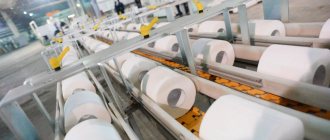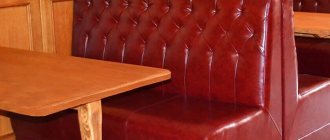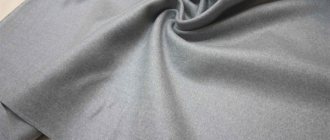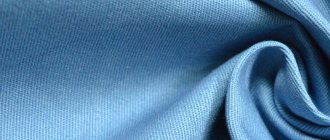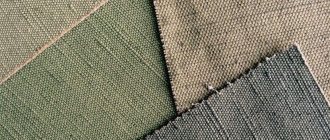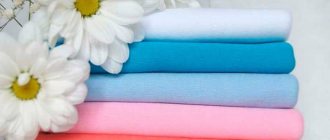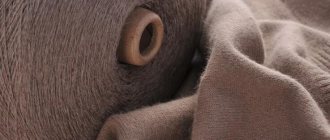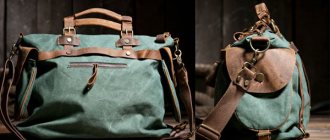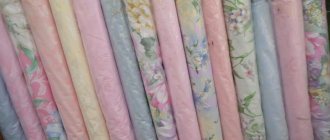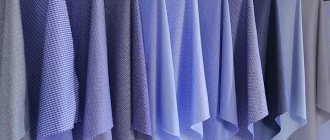| What is it called differently: | jacquard |
| Natural or synthetic? | can be natural, synthetic, combined |
| How does it feel? | beautiful, with a relief pattern, pleasant to the touch |
| Application: | clothing and accessories, table and bed linen, curtains, furniture upholstery |
| Fabric structure: | complex weave of threads called jacquard |
| Does it stretch or not? (Extensibility) | depending on the type, it can be very elastic or slightly stretchable |
| Recommended washing temperature: | not higher than +30 °С |
| Washing mode: | gentle |
| Press: | spinning is not advisable |
| Kinds: | cotton, satin, stretch jacquard, satin jacquard, jersey jacquard |
| Presence of shine: | depending on the type, it may have a surface with or without a glossy sheen |
| Degree of creasing: | low |
| Edge fraying: | crumbles to varying degrees depending on the composition of the fabric |
| Hygroscopicity: | high |
| Drapability: | flows, gently drapes, forms beautiful folds |
| Ability to keep warm: | good |
| Shrinkage: | rarely shrinks |
| Breathability: | good |
| Fade or not: | the material is not prone to fading |
The machine for the production of fabric with relief weaving was created by a weaver from Lyon, Joseph Marie Jacquard, and the material was named after him. What kind of fabric is this - jacquard? Smooth and pleasant to the touch fabric, which is obtained thanks to a special weave of threads. To create a pattern, threads of different shades are used; in some cases, the pattern is applied later, when the fabric has already been woven.
Jacquard fabric, Prada line
Description
Jacquard is not cheap due to the complexity of the production process. The main feature of woven patterns is that there is a very large number of threads per unit surface, which determines the specific properties of the material. Fabric description:
- a distinct pattern, often three-dimensional;
- attractive appearance;
- crease resistance;
- ease.
The composition of jacquard includes artificial or natural fibers, as well as their combination. How much the fabric will weigh depends on the thickness of the fibers that make up it and on the number of shades that form the pattern. The two-color material, despite its high density, is lightweight and easy to care for. Usually the number of multi-colored threads reaches ten to create a complex pattern - 100 or more.
Advantages and disadvantages
Jacquard fabric has only one drawback - high cost. At the same time, fabric made from natural fibers is more expensive than synthetic ones.
Jacquard knitwear
Advantages:
- increased strength;
- high wear resistance;
- resistance to temperature changes;
- ease of care.
Kinds
Jacquard fabrics come in several varieties, the most common are:
- Cotton - it contains cotton, often mixed with synthetic fibers. The thickness and texture can be different, depending on them, decorative textiles, upholstery materials, and clothing items are made from cotton jacquard.
- Satin is used as a raw material for sewing luxury bed linen. Satin jacquard is made on a cotton base with the addition of synthetic threads.
- Stretch is a jacquard made of elastic synthetic threads; the material has excellent stretch and breathability. The fabric is used for sewing clothes and making orthopedic mattresses.
- Satin jacquard made of synthetic polyester fibers. Serves as an ideal raw material for sewing curtains and various decorative textiles. The fabrics do not wrinkle, do not shrink when washed, and are easy to care for.
- Jacquard knitwear is used as a raw material for sewing warm clothes: sweaters, coats, jackets, suits, dresses, skirts.
Dense jacquard fabric
Technical characteristics and composition determine the properties and purpose of jacquard fabrics:
- fine fabric made from natural fibers, used for sewing high-quality clothing and bed linen;
- jacquard based on synthetic fibers, characterized by high density, is used as curtains, curtains and decorative material;
- For upholstery, the densest type of jacquard is used, with a special impregnation, which is necessary to facilitate the care of furniture.
The most popular types of canvas
Today there are dozens of types of jacquard fabric. The main ones include: satin, satin, stretch, knitwear, silk, chenille.
Spectacular shine of satin jacquard
To create satin jacquard fabric, a method of weaving fabrics with unequal pitches is used. This method ensures high wear resistance and durability of the material.
Initially, satin fabric was made exclusively from silk fibers, but over time it began to be made from polyester and polypropylene.
It is very easy to distinguish jacquard fabric:
- The surface of the fabric is smooth and shiny.
- The texture of the pattern has a mirror image on the reverse side.
- The colors shimmer.
- The structure of Jakarta fabric is very dense.
- Such products do not wrinkle at all.
- The canvas has airy lightness.
You might be interested in Features of embroidered French tulle mesh and types of fabrics used
Satin jacquard
Please note! Curtains are mainly made from this material. They do not allow sunlight to pass through, which is why they are in great demand among apartment owners who are located on the sunny side. These products are suitable for both home and office, living room or conference room.
Mysterious mirror reflection of satin jacquard
Satin jacquard, like other types, is produced using machine weaving threads and has a relief pattern. Its texture is similar to ancient tapestries.
The design on the front side is convex, and on the back side it is depressed. If the canvas is not monochromatic and consists of two colors, then on one side the base will be, for example, beige and the pattern red, and on the other side, on the contrary, the pattern will be beige and the background red. Therefore, we can say that jacquard satin is simply a double-sided fabric without a reverse side.
Sample of jacquard satin bed linen
Luxury bedding is mainly made from this material. It is made from twisted cotton thread, which makes it very durable. This linen has unique qualities:
- It doesn't wrinkle, so it doesn't need ironing.
- Easily withstands repeated washings.
- Provides comfortable sleep as it absorbs excess moisture well.
- It has a stylish look.
Seductive jacquard stretch
When making stretch jacquard, spandex, lycra, or elastane fibers are added to the fabric, making the products distinguished by strength, durability, elasticity, air and moisture permeability.
Dresses and women's suits are mainly made from this material. After all, clothes from this canvas fit the figure well, emphasizing the seductive features of the female body.
Stretch jacquard dress
Incredibly warm jacquard knitwear
Loops in such a fabric are formed at intervals, according to the pattern used. Warm clothes are mainly made from this material: skirts, sweaters, dresses, coats and gloves. The clothes are produced in different colors, therefore they are ideal for both men and women.
The airy lightness of jacquard silk
Silk jacquard is created from both natural and synthetic fibers. Due to the fact that the fabric has extraordinary airiness and lightness, it is used to make luxury lingerie. You also get unique women's outfits and luxurious bed linen.
Perfect jacquard chenille upholstery
Jacquard chenille is mainly used for furniture upholstery. It is often impregnated with a variety of products, giving them waterproof, dirt-repellent properties.
You may be interested in this Advantages of striped tulle: which fabric to choose
Jacquard chenille
Compound
Jacquard fabric comes in several varieties: synthetic, silk, blended and cotton.
All types differ from each other in composition:
- Synthetic jacquard fabric contains polypropylene and polyester, is characterized by a long service life, does not require special care, and is pleasant to the touch. Synthetic jacquard is often used to make household products, such as mattresses.
- Silk fabric is the most expensive of all the varieties presented. It is environmentally friendly and does not cause allergies.
- Blended fabric is much cheaper than cotton or silk jacquard. The increased density and other advantages of mixed fabric are due to the content of non-woven fibers. The most popular version of mixed fabric is stretch jacquard, which is a highly elastic, breathable fabric.
Atlas Jacquard
Types and their properties
The purpose and composition of the material determine its characteristics. There are many varieties of patterned fabrics, some of which are very different from the classic material and have only external similarities. Let's name the main types of patterned fabric:
- satin jacquard is a material of synthetic origin, characterized by aesthetic appeal, light weight, and affordable price. Used for the manufacture of various interior items, most often curtains and drapes;
- taffeta jacquard is a thick fabric with a printed pattern. Includes viscose, acetate and cotton threads. Applies to delicate fabrics;
- cotton jacquard - also known as cotton jacquard. A popular type of fabric used for clothing and home textiles. Contains cotton in various proportions. This jacquard can be two-color, plain or multi-colored. Depending on the purpose, it is presented in canvases of different thicknesses;
- poplin jacquard is a type of cotton fabric used in the manufacture of bed linen;
- jacquard brocade is an expensive variety based on silk or viscose and involves a combination of different types of threads, including metallized ones. It has significant weight and is characterized by high density;
- jacquard silk - refers to light elegant fabrics of natural or mixed properties. Features large-patterned and relief designs;
- satin is an elegant fabric with low weight, used for sewing evening and wedding dresses;
- knitwear – there are several varieties of jacquard knitwear. Stretch fabrics contain elastane. Knitted fabric is produced using knitting needles or knitting machines. An interesting double-sided jacquard, where there is no reverse, which is typical for scarves and stoles. Depending on the knitting technique, single-font and double-font jacquards are distinguished. When knitting in the round, split jacquard is used;
- quilted - material used for making home textiles - bedspreads, rugs. It has a filler that is distributed evenly between two layers of fabric secured with a stitch.
Jacquard fabrics also vary in purpose. Furniture jacquard is characterized by increased density. Jacquard fabric for clothing is distinguished by unusual patterns: checkered, striped. There are monochromatic varieties of rich colors: red, plum, emerald. Black jacquard fabric is practically not used in the interior, but is suitable for sewing clothes. Automotive jacquard has a muted palette, but is resistant to abrasion. Automatic jacquard is often used to sew covers for luxury cars.
How to choose
First of all, consumers choose jacquard according to its intended purpose. The criteria of price and brand are not of great importance and depend on the personal preferences of the buyer, as well as financial capabilities.
The range of materials, the distinctive feature of which is a relief pattern, is truly huge. Jacquard is used to make bedspreads, covers, canopies, bags, ties and other items of clothing, and curtains. The appearance of sofas covered with such material is distinguished by its beauty and at the same time such upholstery is very practical. Jacquard table linen (tablecloths, napkins) looks very rich and solemn, and how high quality it will be depends on the composition of the fabric.
Advice! How much jacquard material will cost is determined by its composition: the more fibers of natural origin it contains, the more expensive the fabric. The price per meter also depends on the manufacturer.
Currently, the Russian market is filled with jacquard from Chinese manufacturers, which is distinguished by its low cost, while the quality can be very acceptable. Chinese-made jacquard is most often represented by synthetic or mixed material.
Jacquard fabric with patterns
Sometimes there are paintings of joint production. For example, a serious Italian company with a good reputation produces jacquard in China. We can say that such cooperation provides a low price (lower than for Italian products) with very good quality.
Turkish jacquard is considered better than Chinese jacquard, since it contains more raw materials of natural origin, and the products are of higher quality.
They are distinguished by the highest quality fabric from European manufacturers, but at the same time they are very expensive. This fabric contains the best raw materials, for example, manufacturers from Portugal add the best Egyptian cotton to jacquard.
Domestic jacquard is of relatively high quality and inexpensive, produced in Ivanovo.
Care
It is better not to clean an expensive, exclusive product from stains and dirt yourself, but to entrust it to dry cleaning. Jacquard of low and medium quality will not be damaged if you wash it at home. This should only be done after carefully studying the manufacturer's recommendations on the label.
Jacquard fabric, art.
Rules for caring for jacquard:
- fabrics painted in bright shades are contraindicated in direct sunlight and elevated temperatures;
- for washing, you should use a high-quality detergent without bleaching or other special additives;
- the formation of creases during storage and drying of jacquard products should not be allowed;
- such items must be washed at a temperature no higher than 30˚ C;
- the stain formed on the surface of the fabric should be removed carefully, without applying significant effort, in order to avoid damaging the structure of the material;
- Jacquard products must be spun in a centrifuge after washing and rinsing;
- Ironing of fabric is carried out from the wrong side.
How to care for jacquard fabric
Jacquard fabric does not require maintenance, but it is important to follow certain general rules that will help extend the life of your products. This fabric can be machine washed or hand washed. The ideal water temperature for washing jacquard is 30 degrees. Since many jacquard products are intended for everyday use (for example, covers and upholstery), they are impregnated with special agents, increasing their strength. A good solution would be to use washing gel instead of powder, the latter can spoil the impregnation, therefore the fabric will wear out faster. The best option for washing jacquard items is the delicate cycle.
In addition, it is recommended to refrain from automatic spinning; it will be enough to set the “water drain” mode and then remove the product. If you wash by hand, do not twist the items; it is best to straighten the fabric on a horizontal surface. The main rule of drying is to avoid direct sunlight.
Jacquard must be ironed from the reverse side, at a minimum temperature; steaming is only possible for fabric with elastic fibers.
So, jacquard is a very durable fabric, but if not properly cared for, it can lose its positive qualities. If you follow simple rules for caring for this fabric, they will not lose their beauty and will become your distinctive feature in your wardrobe or home.
